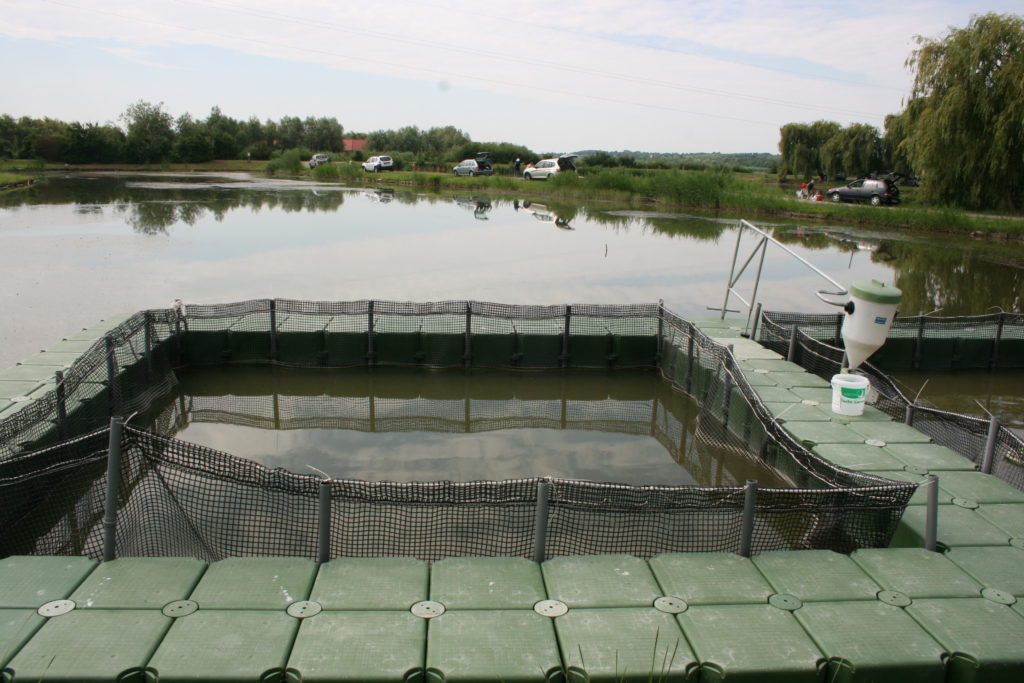
Freshwater aquaculture
In Europe there are several different freshwater systems used for aquaculture production. There are three types of freshwater aquaculture which are mainly practiced in Central and Eastern Europe, these include: extensive pond farming, semi-intensive and intensive freshwater fish farming. In the extensive pond farming method, every winter the ponds and lagoons are cleaned and fertilized. This process stimulates aquatic vegetation and consequently intensifies the presence of micro-organisms, small molluscs and crustaceans, larvae and worms, which are the base of the aquatic food pyramid. In the semi-intensive system, the production of the pond is increased by adding supplementary feed, usually dry pellets. The intensive freshwater fish farming involves open-air concrete tanks that enclose different sizes of fish and utilizes recirculation or flow-through system to grow them. Intensive recirculating aquaculture systems (RAS) that treat and re-use water are becoming more important throughout Europe and Denmark is one of the countries that has pioneered this technology. Pond systems are also used in other countries including France and the UK to grow trout, some of which is used for restocking of recreational fisheries. Trout is also grown in freshwater cage systems in European lakes and in Scotland, freshwater lakes are also used for the production of salmon smolts before they are moved to marine cages.


